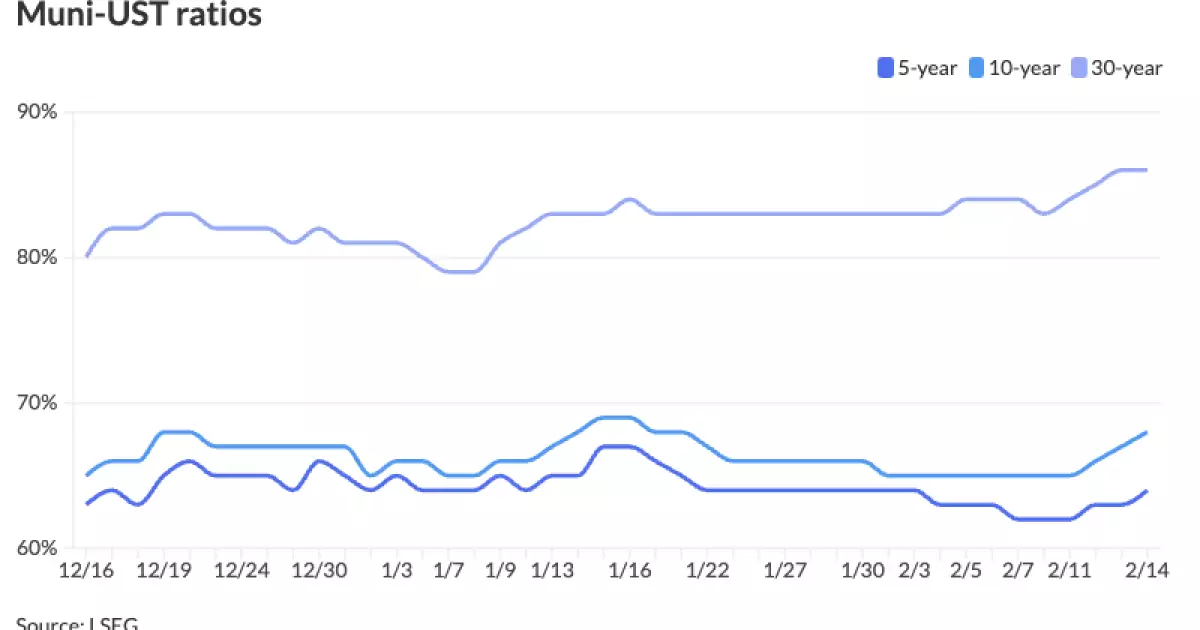As investors navigate the complexities of the municipal bond market, recent developments shed light on both immediate challenges and opportunities awaiting stakeholders. The market is currently experiencing notable changes influenced by a myriad of factors, such as U.S. Treasury yields, inflation reports, and global tariff discussions. These elements are not only shaping investor sentiment but also altering the mechanics of municipal bond trading, which demands a closer examination of the strategies that market participants may need to adopt.
A decline in U.S. Treasury yields has traditionally signaled a bullish sentiment in the bond market. However, the recent situation paints a more nuanced picture. After the robust employment data released earlier this month, which halted a previous rally in Treasury securities, market experts are scrutinizing the implications for municipal bonds. The Consumer Price Index (CPI) report further compounded these dynamics by inducing what analysts termed “bear steepening” within the Treasury curve—a phenomenon where long-term yields rise more than short-term yields. According to Bank of America (BofA) strategists, this ongoing volatility in Treasury rates is indicative of deep concerns surrounding inflation.
This suggests that municipal bond investors may want to brace for a protracted period of range-bound Treasury yields, which could persist until definitive evidence of cooling inflation emerges. Coupled with unpredictability stemming from tariff announcements, this market environment challenges conventional strategies for trading municipal bonds, making market timing increasingly critical.
Supply and Demand Insights
In the upcoming week, the municipal bond issuance is expected to settle at approximately $5.5 billion, markedly lower due to the holiday-shortened week. Despite this contraction, BofA strategists maintain that the overall supply will likely remain robust through February. The Bond Buyer’s 30-day visible supply currently hovers around $10.42 billion, indicating healthy municipal bond availability in the market.
Understanding the relationship between supply and demand is crucial for investors. The scenario we observe—characterized by large redemption volumes and steady coupon payments—can create an environment where demand continues to surpass new issuance. Thus, a favorable influx of mutual funds is anticipated to provide necessary support, fueling a potentially resilient bond market amid uncertain economic conditions.
A significant revelation from recent market assessments is the apparent steepening of the AAA yield curve, marking a shift in investor attitudes towards duration exposure. Over the past weeks, the 1s10s AAA slope saw a transformation from a deeply inverted -70 basis points last year to a more stable 37 basis points. This observation indicates a modification in risk perception, leading to cautious investor strategies focused on duration management.
Moreover, municipal-to-U.S. Treasury (Muni-UST) ratios reflect a slight cheapening, which implies that investors are becoming more discerning. As of the latest readings, the two-year Muni-UST ratio was reported at 63%, with a progressively increasing trend witnessed across various maturities. Such movements warrant careful consideration from those invested in the municipal market, as relative value analysis will play a pivotal role in decision-making.
Looking ahead, the anticipated pipeline of new municipal bond issues promises to factor prominently in the coming trading sessions. With an estimated total issuance of $5.535 billion on the horizon, investors can expect major contributions from entities like Miami-Dade County and the Pennsylvania Economic Development Financing Authority, among others.
The competitive calendar is also set to reveal substantial offerings, particularly from Guilford County and other districts looking to capitalize on current market conditions. As bond prices and interest rates continue to fluctuate, strategic assessment of each deal’s value will enable investors to make informed decisions regarding allocations.
As we look toward the upcoming weeks, the municipal bond landscape presents a complex mixture of opportunities and challenges driven by external economic indicators and internal market conditions. Investors must adapt to the evolving macroeconomic scenario characterized by heightened volatility, inflationary pressures, and a robust but selective issuance calendar.
An agile and informed investment approach will be essential for capitalizing on present opportunities while safeguarding against potential market headwinds. By carefully monitoring the intricate interplay between Treasury yields, supply-demand dynamics, and investor sentiment, participants in the municipal bond market can better navigate the currents of this critical investment landscape.

